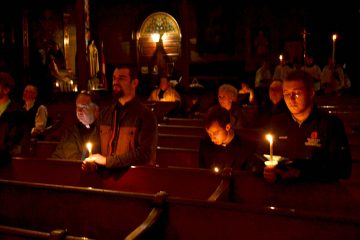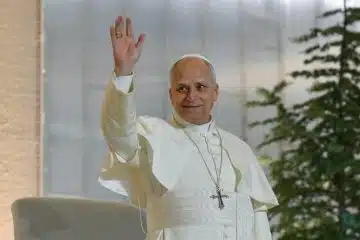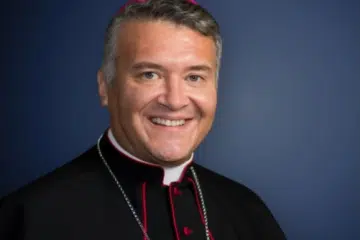Resisting Throwaway Culture with Pope Francis
In his 1988 song “Death is Not the End,” Bob Dylan wrote, “When you’re standing on the crossroads / That you cannot comprehend / Just remember that death is not the end / And all your dreams have vanished / And you don’t know what’s up the bend / Just remember that death is not the end.” I thought of this song when I read Pope Francis’ preface for the forthcoming book, Awaiting a New Beginning: Reflections on Old Age, by Cardinal Angelo Scola, Archbishop- Emeritus of Milan. Like Bob Dylan, Pope Francis affirmed three things about aging and death. It is mysterious. It is inevitable. It is not the end.
In that preface, Pope Francis pursued a key theme of his pontificate, “Resisting throwaway culture,” as theologian Charles C. Camosy put it in his excellent book by that name. The pope challenged us to resist throwaway culture, explained Camosy, “and build up a culture of encounter and hospitality.” Pope Francis showed us how to “meet the vulnerable and marginalized personally by disrupting our routines and going to the peripheries of our familiar communities,” Camosy continued. These communities include, of course, the aged and infirm, for whom the late pope had a special affinity. This can be seen as the hallmark of his papacy: hospitable, vulnerable availability to “the other,” by whatever way “the other” confronts us. In pursuing this theme, the Holy Father showed us both how to live and how to die.
He wrote in the preface, “We must not be afraid of old age, we must not fear embracing becoming old.” This requires work, because we live in a culture that both fears and loathes aging and the aged. Pope Francis urged us to resist this mentality. “To say ‘old’ does not mean ‘to be discarded,’ as a degraded culture of waste sometimes leads us to think.” The issue, he explained, is not that everyone grows old—that’s a given. Rather, the problem we must confront is “how one becomes old.” As Christians, we must “live this time of life as a grace, and not with resentment.” We must learn to accept “diminished strength … increasing fatigue” and slower reflexes “with a sense of gratitude and thankfulness.” If we learn this lesson, he wrote, old age “becomes an age of life which … is truly fruitful and capable of radiating goodness.”
But Pope Francis did not just write pious repetitions of urgent admonitions. Rather, he acted. And his actions spoke louder than his words. He did not merely make himself available to the marginalized and outcast; he pursued them. He proactively sought the company of those who many of us prefer to avoid. Whether embracing a severely disfigured pilgrim in St. Peter’s Square, washing the feet of prisoners in Rome’s Regina Coeli jail, or ministering to Roman prostitutes, Pope Francis showed us how to be comfortable with those who cause us discomfort.
Where we flinch, he embraced. Where we flee, he pursued. And where we hide, he emerged. The Holy Father did not just encourage us to “smell the sheep”; he showed us how it is done.
This includes his very last appearances. On Easter Sunday, Pope Francis met with Vice President JD Vance, whom the pope reproved weeks earlier. Francis could easily have declined this audience and later public appearances, citing his severe difficulty in breathing and speaking. Instead, he made himself available as a sign of hope and reconciliation. And then Pope Francis made a final, definitive statement about the nature of his papacy: after his “Urbi et Orbi” speech was read on his behalf and while he was in clear distress and barely audible, he blessed the crowd in St. Peter’s Square, then, in one last exercise of smelling the sheep, he defied his doctors’ orders and went out among the people, to see them and to be seen.
In that Easter address to the city and the world—his final public speech—Pope Francis declared, “Christ is
Risen!” These words, he explained, “Capture the whole meaning of our existence.” Every life is precious, he continued, “The life of a child in the mother’s womb, as well as the lives of the elderly and the sick, who in more and more countries are looked upon as people to be discarded.”
In “Death is Not the End,” Bob Dylan also wrote: “Oh, the tree of life is growing / Where the spirit never dies/ And the bright light of salvation shines / In dark and empty skies.” It is highly unlikely that Pope Francis even knew this song, but the final words of his last address echo Dylan’s hopeful lyrics. “In the Lord’s Paschal Mystery,” the Pope wrote, “death and life contended in a stupendous struggle, but the Lord now lives forever. He fills us with the certainty that we too are called to share in the life that knows no end, when the clash of arms and the rumble of death will be heard no more. Let us entrust ourselves to him, for he alone can make all things new!”
Pope Francis didn’t merely wear his heart on his sleeve. He rolled up those sleeves to do the work the Gospel demands. May he now find the peace of his reward, embraced by the Christ whom he so faithfully served.
 Dr. Kenneth Craycraft, [email protected], holds the James J. Gardner Chair of Moral Theology at Mount St. Mary’s Seminary & School of Theology. He is the author of Citizens Yet Strangers: Living Authentically Catholic in a Divided America.
Dr. Kenneth Craycraft, [email protected], holds the James J. Gardner Chair of Moral Theology at Mount St. Mary’s Seminary & School of Theology. He is the author of Citizens Yet Strangers: Living Authentically Catholic in a Divided America.
This article appeared in the June 2025 edition of The Catholic Telegraph Magazine. For your complimentary subscription, click here.














